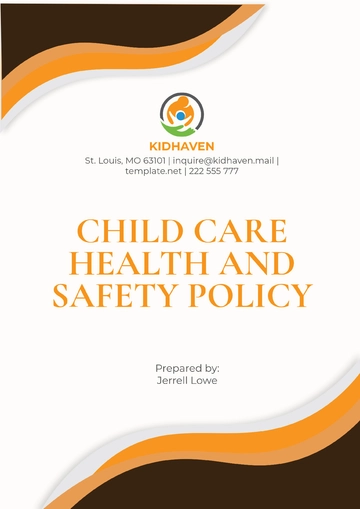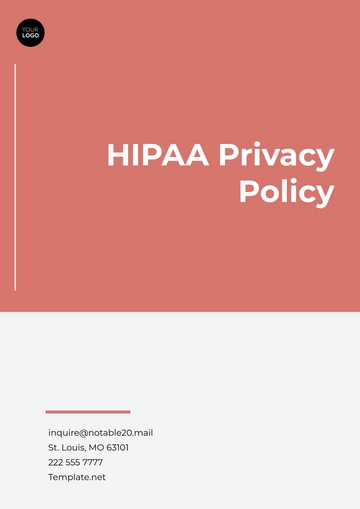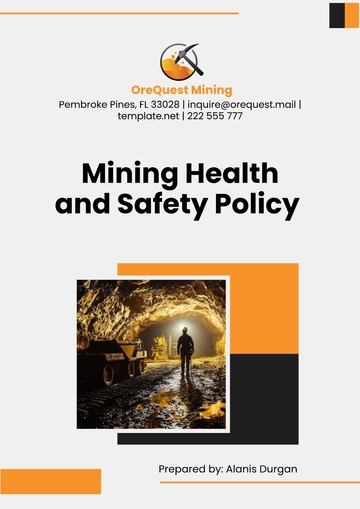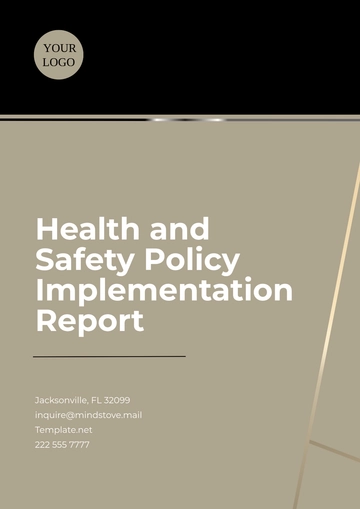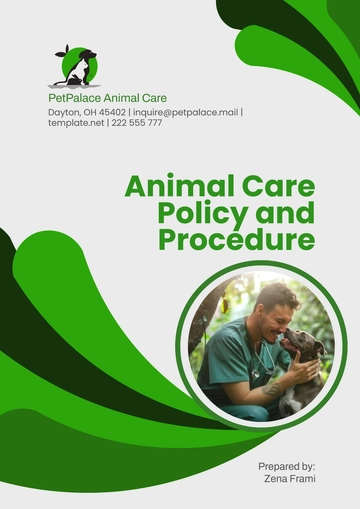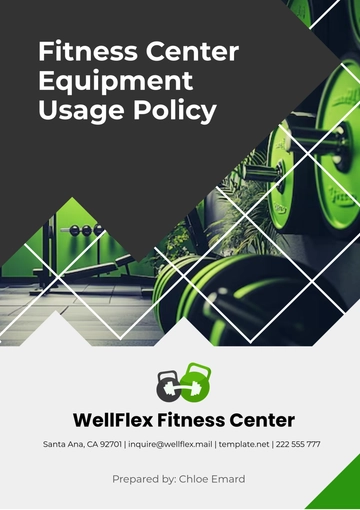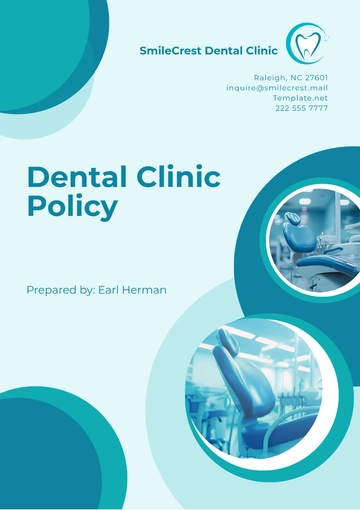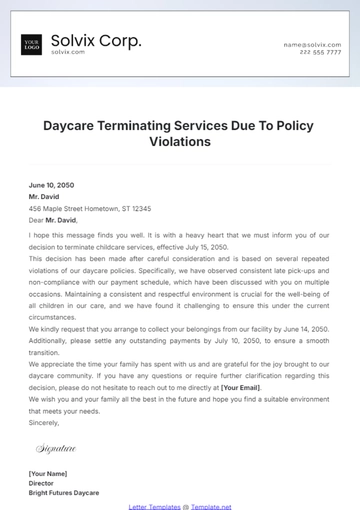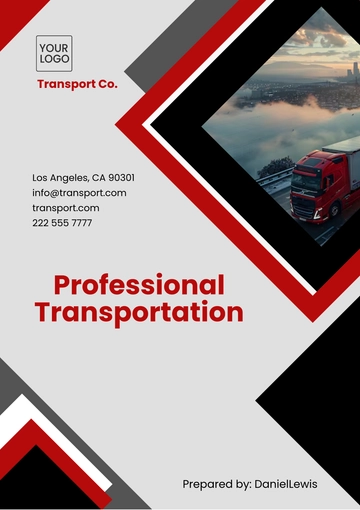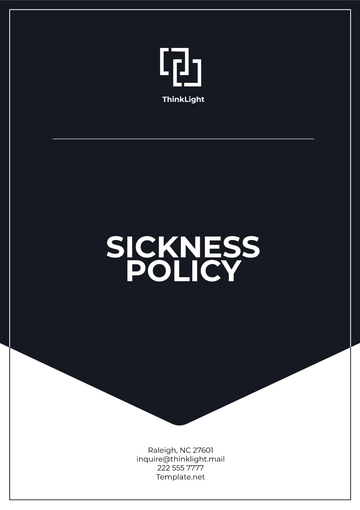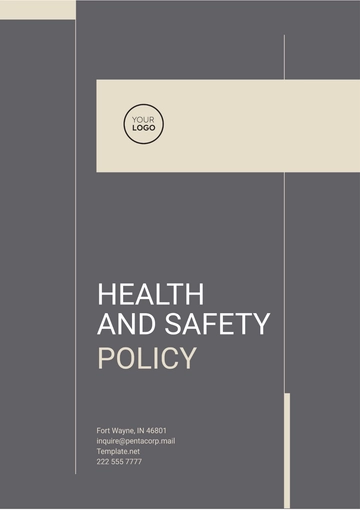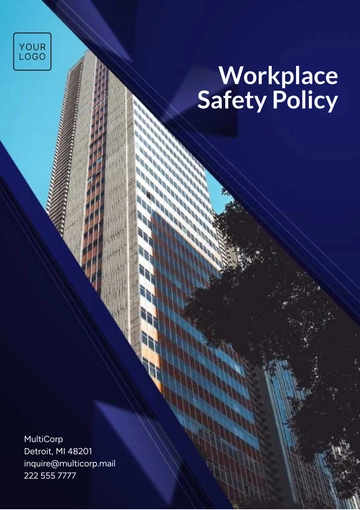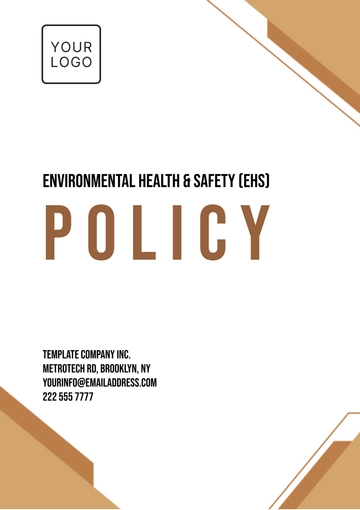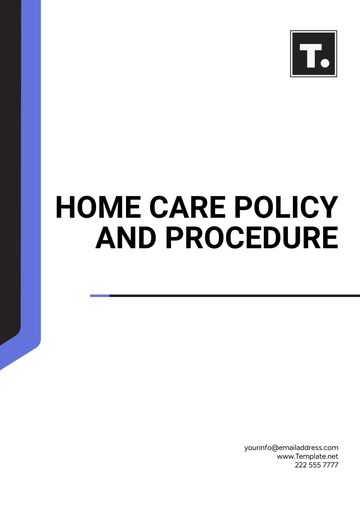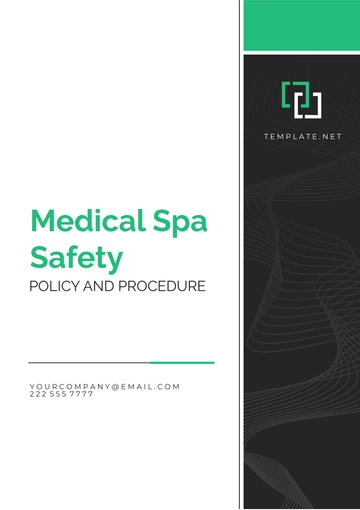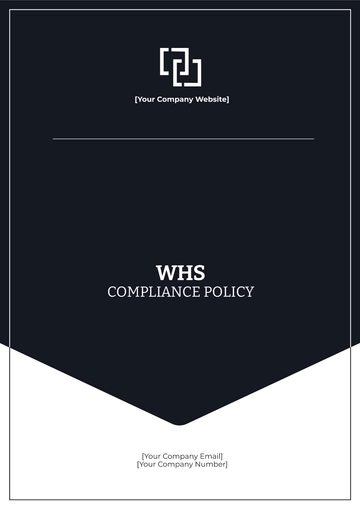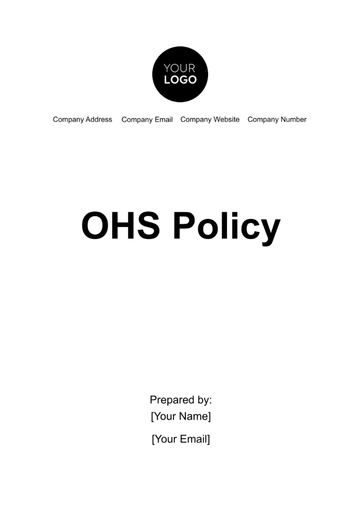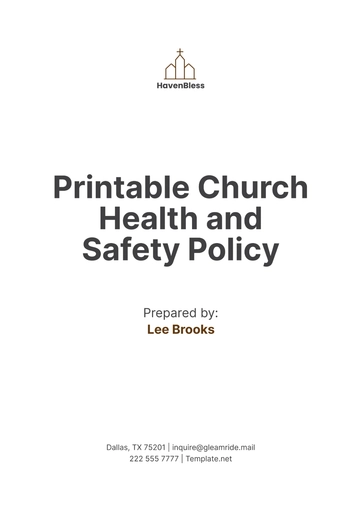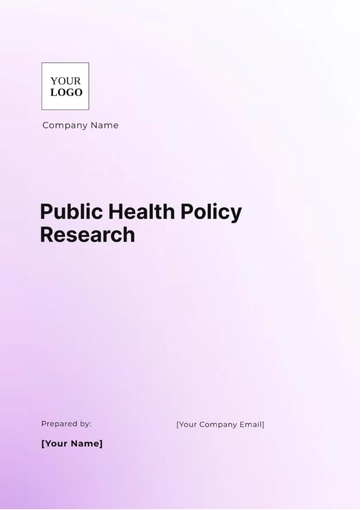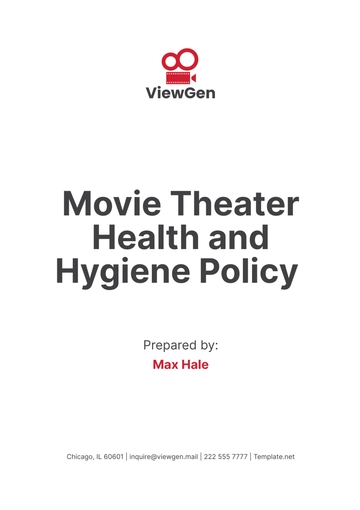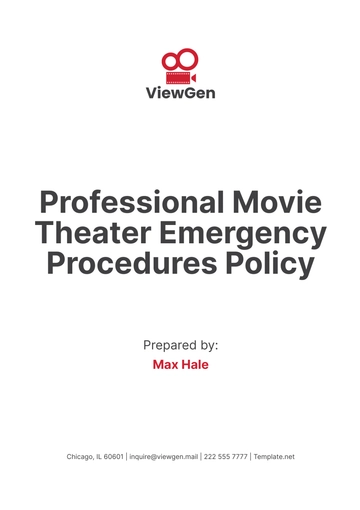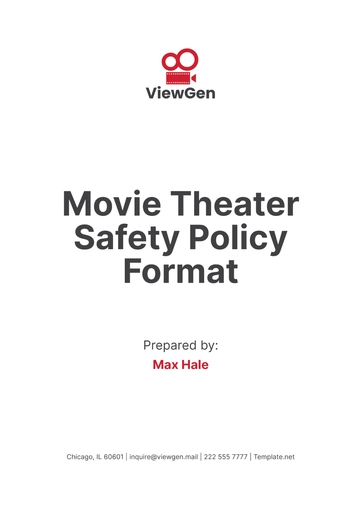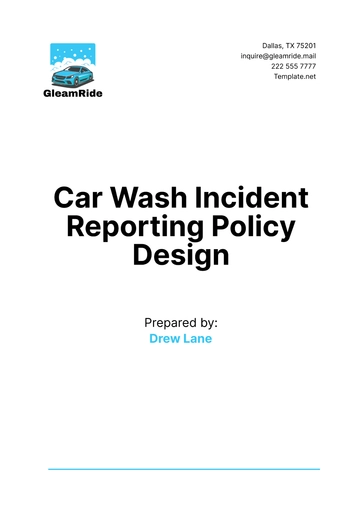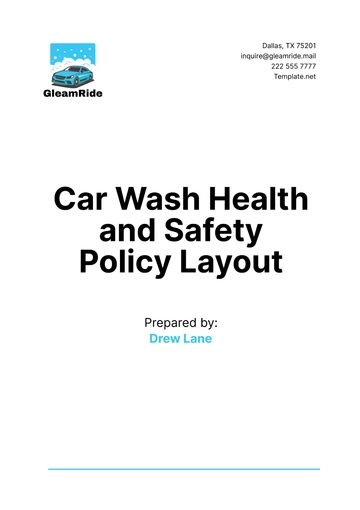Free Workplace Safety Policy
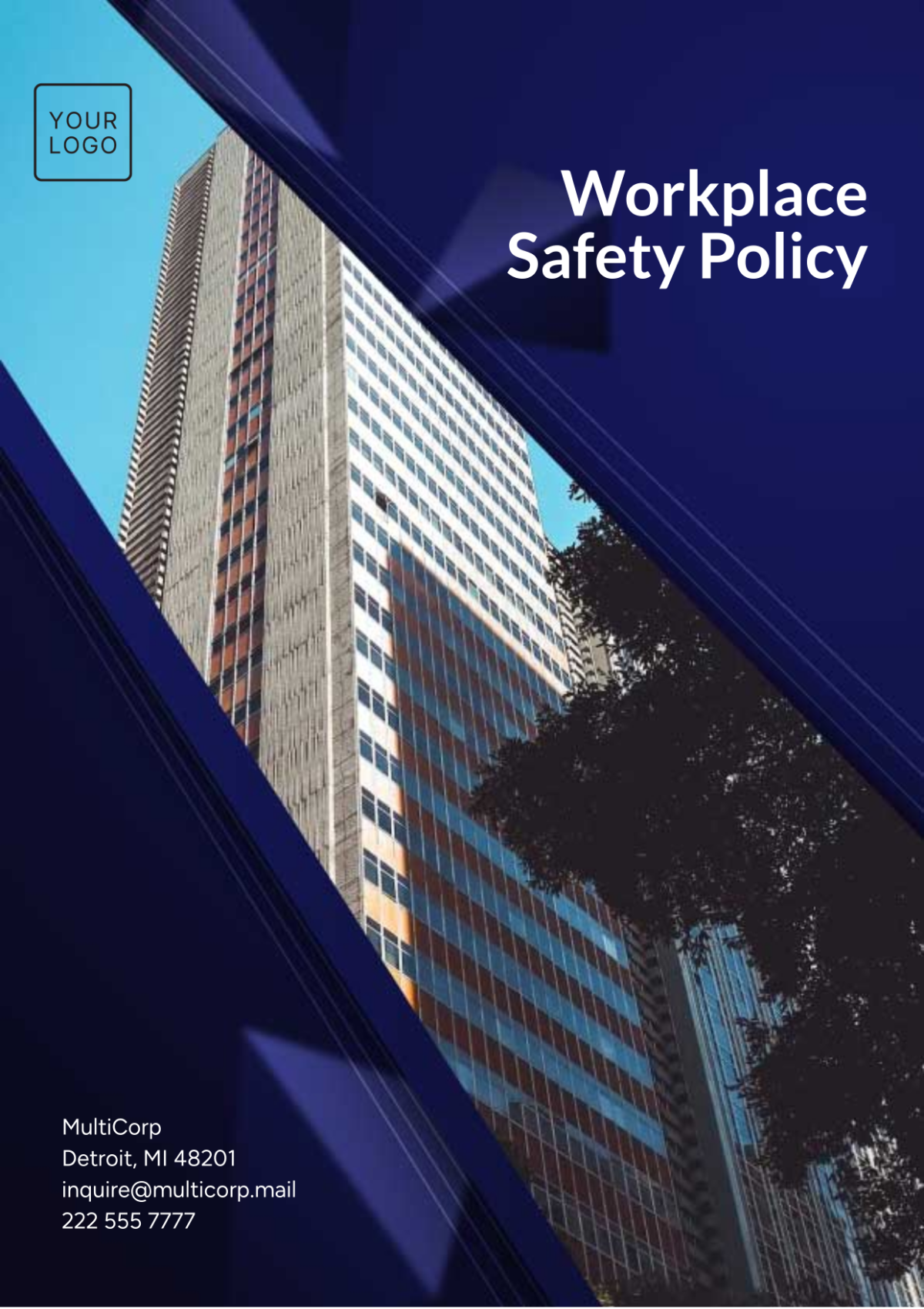
I. Introduction
At [Your Company Name], the safety and well-being of our employees is a top priority. We are committed to providing a safe and healthy working environment for all our staff members. This Workplace Safety Policy is designed to outline the procedures and guidelines that ensure a secure workplace. Our goal is to minimize risks and prevent accidents by adhering to industry standards and legal requirements. We believe that a proactive approach to safety not only protects our employees but also contributes to the overall efficiency and success of our operations.
All employees are expected to understand and comply with the safety measures detailed in this policy. It is the responsibility of every team member to actively participate in maintaining a safe work environment by following established safety protocols, reporting hazards, and cooperating with safety training and inspections. By working together and upholding these safety standards, we can ensure a workplace that promotes health, prevents injury, and fosters a culture of safety. Your cooperation and commitment to these safety practices are essential to achieving our safety goals and ensuring the well-being of everyone at [Your Company Name].
II. Objectives
The objectives of this Workplace Safety Policy are central to ensuring a secure and healthy working environment for all employees at [Your Company Name]. The following key goals outline our commitment to workplace safety and reflect our dedication to creating a safe and compliant work environment. These objectives serve as the foundation for our safety practices and are designed to guide our efforts in minimizing risks, adhering to legal standards, and fostering a culture of safety awareness and responsibility.
To provide a safe and healthy working environment for all employees.
To minimize the risk of accidents and injuries.
To comply with legal and regulatory requirements related to workplace safety.
To promote a culture of safety awareness and responsibility.
III. Scope
This Workplace Safety Policy is applicable to all individuals who are present on the premises of [Your Company Name]. It encompasses the following groups to ensure comprehensive coverage of safety measures and practices:
Employees: All full-time, part-time, and temporary staff members are required to adhere to the safety protocols outlined in this policy. This includes participating in safety training, reporting hazards, and following all safety procedures relevant to their roles.
Contractors: Any external contractors performing work on our premises must comply with the safety guidelines set forth in this policy. They are expected to familiarize themselves with and follow all safety procedures to maintain a safe working environment.
Visitors: Individuals visiting our company premises, including clients and guests, are subject to the safety rules and guidelines outlined in this policy. Visitors must be informed of any relevant safety procedures and adhere to them while on-site.
Vendors: Vendors supplying goods or services to [Your Company Name] must observe all safety regulations and practices while on our premises. This includes ensuring that their personnel are briefed on and comply with our safety standards.
IV. Responsibilities
In maintaining a safe and healthy workplace, it is crucial to clearly define the responsibilities of both management and employees. By delineating these roles, [Your Company Name] ensures that safety practices are effectively implemented and consistently followed. The following table outlines the specific responsibilities assigned to management and employees, highlighting the key actions required from each group to uphold our safety standards.
The table below provides a detailed overview of these responsibilities, offering a clear understanding of what is expected from each party. This structured approach helps ensure that safety protocols are comprehensively managed and adhered to across all levels of the organization.
Role | Responsibilities |
|---|---|
Management |
|
Employees |
|
V. Emergency Procedures
In any emergency situation, quick and effective action is essential to ensure the safety of all individuals on [Your Company Name] premises. This section outlines the critical steps employees must take to respond to emergencies promptly and safely. By following these procedures, we can minimize risks and manage emergencies efficiently. The following guidelines are designed to ensure that everyone knows how to react appropriately, from alerting others to following evacuation protocols and reporting to assembly points. Adherence to these procedures helps protect everyone and facilitates a coordinated response.
In the event of an emergency, employees should follow these procedures:
Immediately alert others in the vicinity and call emergency services if necessary.
Follow the company's emergency evacuation plan.
Use designated emergency exits and assembly points.
Do not use elevators during an evacuation.
Report to the designated assembly point and await further instructions.
VI. Training and Awareness
At [Your Company Name], ensuring that employees are well-informed and equipped to handle safety concerns is a cornerstone of our Workplace Safety Policy. To achieve this, all employees will undergo regular and comprehensive training covering critical safety topics. This ongoing education is designed to maintain high standards of safety awareness and compliance throughout our organization.
Workplace Safety Procedures and Guidelines: Employees will receive thorough training on the company’s safety procedures and guidelines. This includes understanding general safety rules, recognizing potential hazards, and following specific protocols relevant to their roles. Training sessions will be conducted regularly to reinforce these guidelines and keep employees updated on any changes or new safety measures.
Use of Personal Protective Equipment (PPE): Proper use of personal protective equipment (PPE) is essential for mitigating workplace hazards. Employees will be trained on the correct use, maintenance, and limitations of PPE. This training ensures that employees are familiar with the types of PPE required for their tasks and understand how to use them effectively to prevent injuries.
Emergency Response and Evacuation Procedures: Comprehensive training will be provided on emergency response protocols and evacuation procedures. Employees will learn the steps to take in various emergency scenarios, including fire, chemical spills, or medical emergencies. This training includes familiarization with emergency exits, evacuation routes, and assembly points to ensure a swift and orderly response in critical situations.
Reporting Accidents and Unsafe Conditions: Employees will be educated on the importance of promptly reporting accidents, near-misses, and unsafe conditions. The training will cover the procedures for reporting incidents, how to document them, and the process for addressing and mitigating identified risks. This proactive approach helps in preventing future incidents and maintaining a safe work environment.
Regular training and continuous awareness efforts are vital to maintaining a culture of safety at [Your Company Name]. By prioritizing these educational initiatives, we aim to empower employees to contribute actively to a safe and secure workplace.
VII. Monitoring and Review
To ensure that our Workplace Safety Policy remains effective and in compliance with all applicable legal requirements, [Your Company Name] is committed to a rigorous monitoring and review process. This ongoing evaluation is crucial for maintaining high standards of safety and adapting to any changes that may impact workplace conditions. Our approach includes the following key components:
Regular Safety Audits and Inspections: We will conduct systematic safety audits and inspections at scheduled intervals to assess the effectiveness of our safety measures. These audits will evaluate compliance with safety protocols, identify potential hazards, and ensure that all equipment and facilities are in good working order. By regularly reviewing our safety practices, we can address issues proactively and make necessary improvements to maintain a safe working environment.
Review of Accident and Incident Reports: All accident and incident reports will be thoroughly reviewed to identify trends, root causes, and areas for improvement. This analysis will help us understand the circumstances surrounding each event and determine if any changes to our safety procedures or policies are required. By learning from past incidents, we can implement corrective actions to prevent similar occurrences in the future.
Updating Policies and Procedures: In response to new developments, changes in legislation, or evolving workplace conditions, we will update our safety policies and procedures as necessary. This ensures that our safety practices remain current and effective. Employees will be informed of any changes, and training will be provided to ensure everyone is aware of and adheres to the updated policies.
By consistently monitoring and reviewing our Workplace Safety Policy, [Your Company Name] demonstrates our commitment to continuous improvement in safety management. This proactive approach helps ensure that our workplace remains safe, compliant, and responsive to the needs of our employees and the regulatory environment.
VIII. Contact Information
Effective communication is essential for addressing safety concerns and ensuring swift resolution of issues. This section provides key contact information for individuals responsible for workplace safety at [Your Company Name]. The following table lists the primary contacts, their roles, and how to reach them. By referring to this information, employees can quickly connect with the appropriate person for safety-related inquiries or issues.
Role | Contact Person | Contact Details |
|---|---|---|
Safety Manager | [Your Name] | safetymanager@email.com |
HR Manager | [Name] | harmanager@email.com |
IX. Conclusion
At [Your Company Name], the safety of our employees is not just a priority—it is a fundamental commitment that underscores everything we do. By following the guidelines and procedures outlined in this Workplace Safety Policy, we collectively work towards creating a secure and healthy environment where every team member can thrive. This policy is designed to protect the well-being of all employees, prevent accidents, and ensure compliance with all relevant safety regulations. However, the effectiveness of this policy depends on the active participation and cooperation of everyone within the organization.
We encourage all employees to take ownership of their role in maintaining and promoting workplace safety. This involves adhering to safety protocols, reporting any hazards or unsafe conditions, and continuously seeking ways to improve safety practices. Remember, a safe workplace is a shared responsibility. By working together and staying vigilant, we can foster a culture of safety that benefits not only our individual well-being but also the overall success of [Your Company Name]. Your commitment to safety is vital to creating a work environment where everyone feels protected and valued.
- 100% Customizable, free editor
- Access 1 Million+ Templates, photo’s & graphics
- Download or share as a template
- Click and replace photos, graphics, text, backgrounds
- Resize, crop, AI write & more
- Access advanced editor
Promote a safe work environment with Template.net's Workplace Safety Policy Template. Fully editable and customizable, this template allows you to set clear safety protocols for your business. Easily adjust every detail, editable in our Ai Editor Tool, to create a professional policy that ensures the well-being of your team.
You may also like
- HR Policy
- Restaurant Policy
- Company Policy
- Accounting Policies and Procedures
- Website Policy
- Privacy Policy
- Safety Policy
- School Policy
- IT and Software Policy
- Law Firm Policy
- Construction Policy
- Interior Design Policy
- Travel Agency Policy
- Education Academic Policy
- Security Policy
- Real Estate Policy
- Expense Policy
- Software Policy
